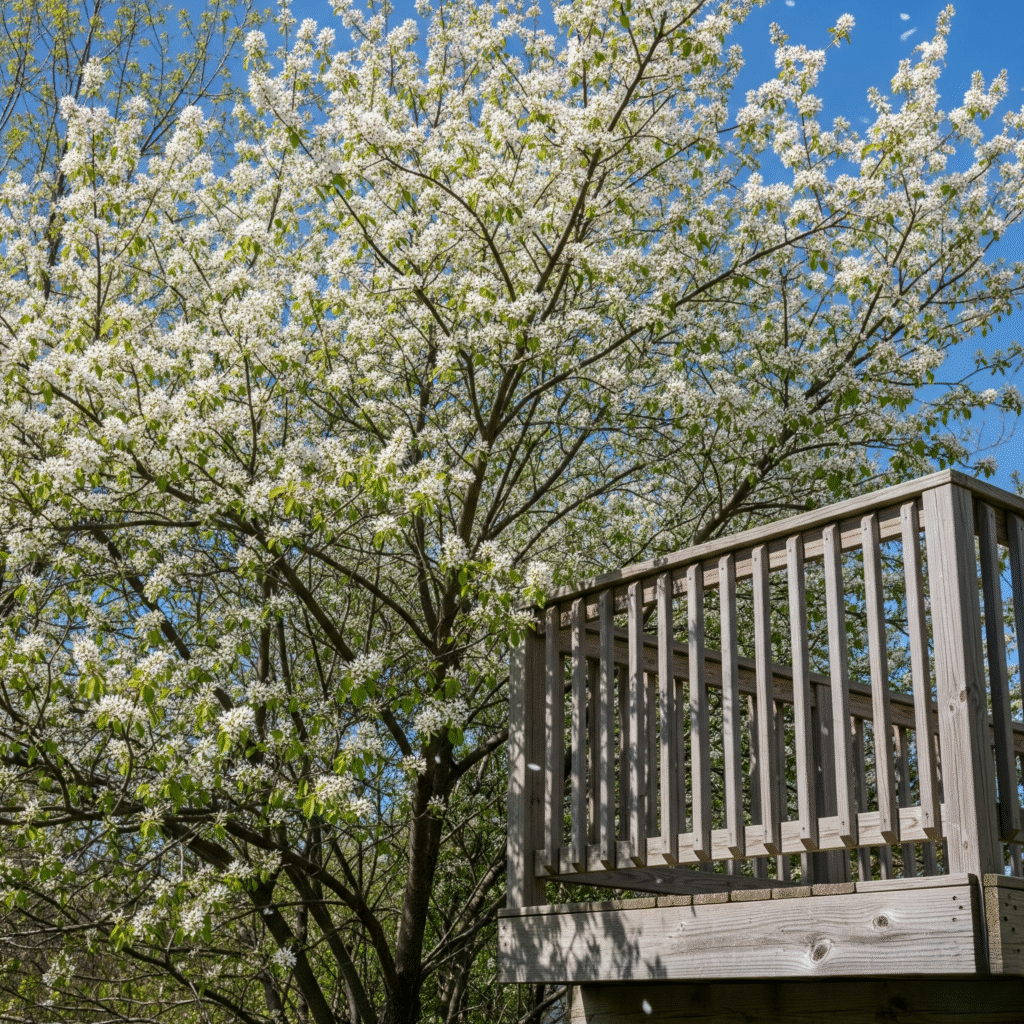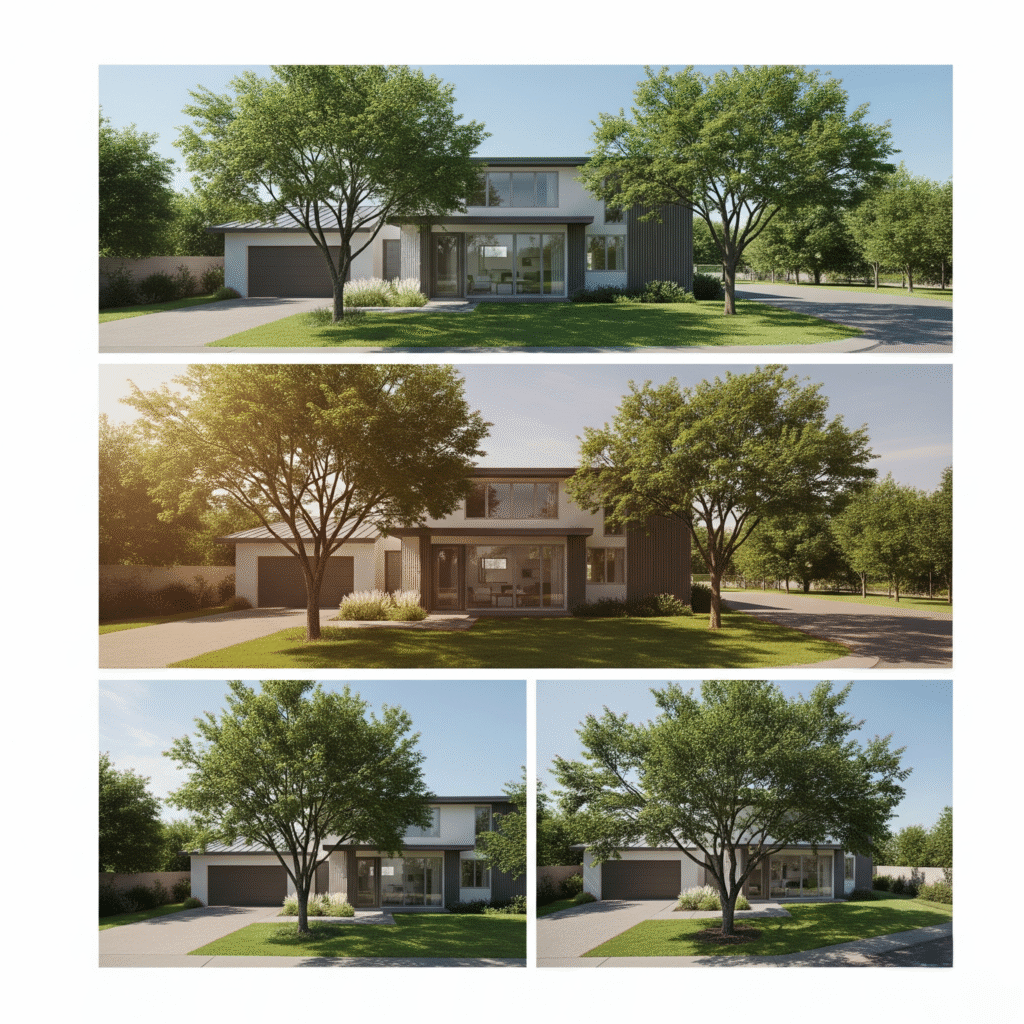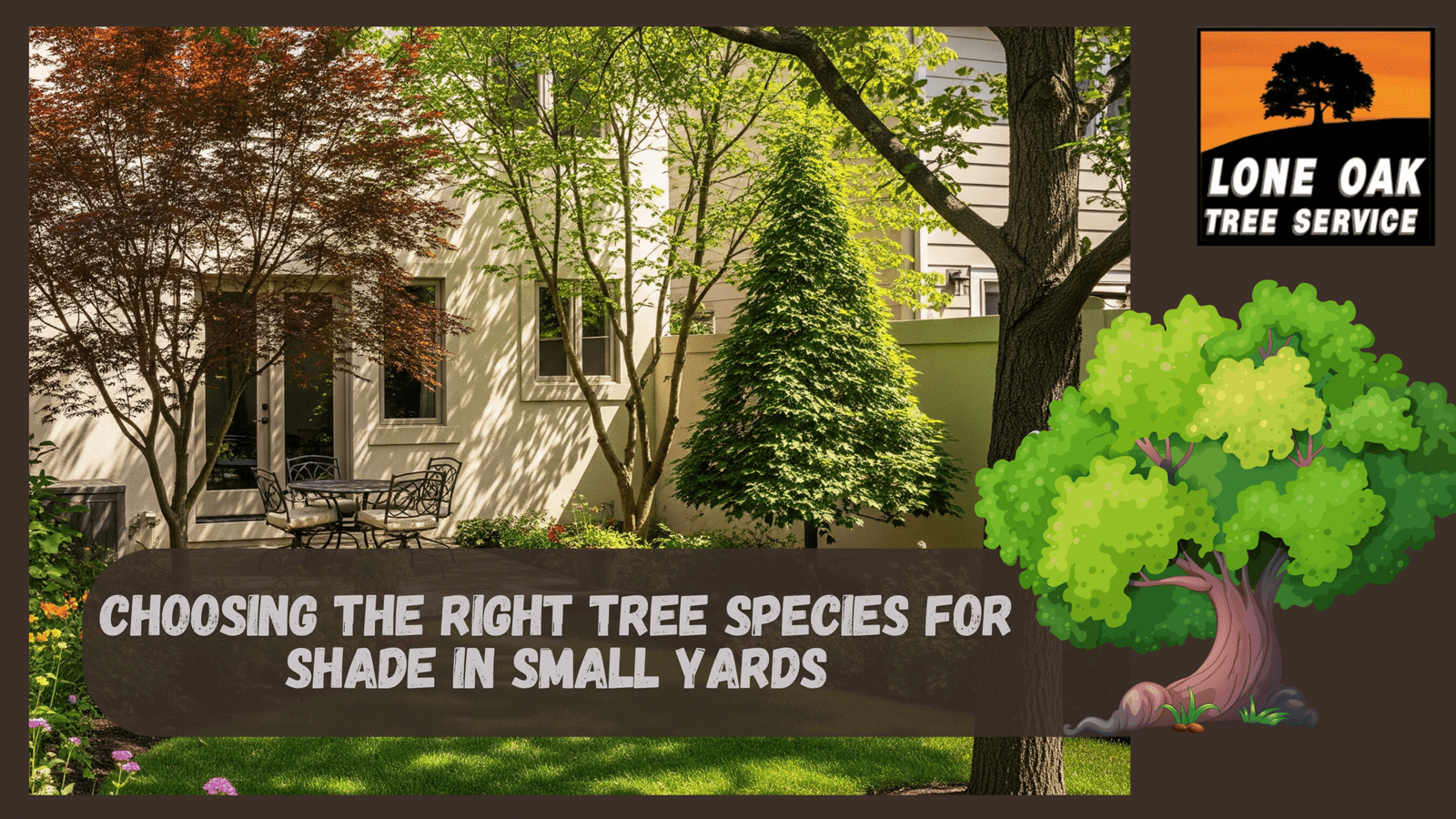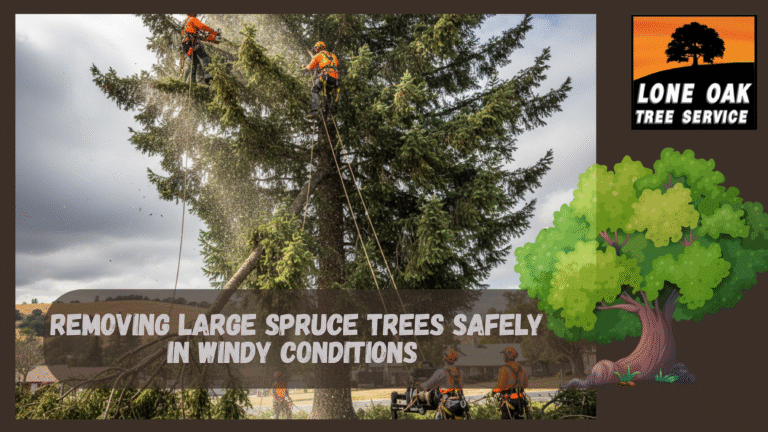Introduction
When you think of adding shade to your yard, you might picture towering oaks or sprawling maples, but in a small yard, those giants can quickly become more burden than a benefit.
The key is to choose compact, well-behaved tree species that provide shade without damaging roots, crowding fences, or blocking sunlight.
Here’s how to choose the perfect shade tree for your small yard, and some of the best species to consider.
Why Shade Trees Matter in Small Spaces
Even in smaller urban or suburban yards, a carefully chosen tree can:
- Cool patios and windows, lowering energy bills
- Provide privacy from neighbors
- Add color, flowers, or seasonal interest
- Increase property value and curb appeal
Tip: The right tree should fit the space at mature size, not just when first planted.
Key Factors to Consider Before Choosing
Mature height and width: Ensure your tree won’t outgrow its spot
Root system: Avoid trees with aggressive roots that can damage foundations or sidewalks
Growth rate: Faster growers offer shade sooner but may have weaker wood
Deciduous vs. evergreen: Deciduous trees let in winter sun; evergreens provide year-round privacy
Local climate and soil: Pick trees adapted to your zone for healthier growth
Best Tree Species for Shade in Small Yards
1. Japanese Maple (Acer palmatum)
- Height: ~15–25 feet
- Spread: ~15–25 feet
- Slow to moderate growth
- Stunning fall colors and sculptural branches
Perfect for filtered shade over patios and small gardens.
2. Serviceberry (Amelanchier spp.)
- Height: 15–25 feet
- Spread: 15–20 feet
- White spring flowers, summer berries, golden fall leaves
Great multi-season beauty in a compact form.

3. Crape Myrtle (Lagerstroemia indica)
- Height: 15–25 feet
- Spread: 10–15 feet
- Long summer blooms, attractive bark
Choose smaller cultivars for tight spaces and colorful summer shade.
4. Redbud (Cercis canadensis)
- Height: ~20–30 feet
- Spread: 20–30 feet
- Early spring pink flowers, heart-shaped leaves
Adds elegance and dappled shade, with a relatively compact footprint.
5. Eastern Hop Hornbeam (Ostrya virginiana)
- Height: 20–40 feet (often stays on the smaller end in yards)
- Spread: 15–30 feet
- Hardy, low maintenance, tolerates urban conditions
Provides light shade with fine-textured leaves.
Tips to Maximize Shade Without Overcrowding
Plant on the south or southwest side to block the strongest afternoon sun
Choose a single tree as a focal point rather than multiple crowded trees
Use small understory trees or shrubs around the main tree for layered shade
Prune carefully to shape the canopy and maintain airflow

Consider Ornamental Trees for Partial Shade
If your yard can’t fit a true shade tree, small ornamental trees (10–15 feet tall) can still cool patios and decks:
- Flowering dogwood
- Fringe tree
- Dwarf magnolia cultivars
They create cozy, dappled shade perfect for sitting areas.
Tree Care for Healthy, Long-Lasting Shade
Water deeply during establishment years (usually the first 2–3 years)
Prune regularly to remove dead branches and control the shape
Mulch base to retain moisture and protect roots
Avoid planting too close to fences, foundations, or other large trees
Healthy trees provide decades of beauty and function.
Conclusion
Even the smallest yard can benefit from the comfort, style, and sustainability of a well-chosen shade tree.
Pick trees that stay compact at maturity
Choose species adapted to your local climate
Plant with future growth and surroundings in mind
By thinking ahead, you can create a beautiful, shaded retreat without overwhelming your outdoor space. Contact us today! your yard matters more than you think.




